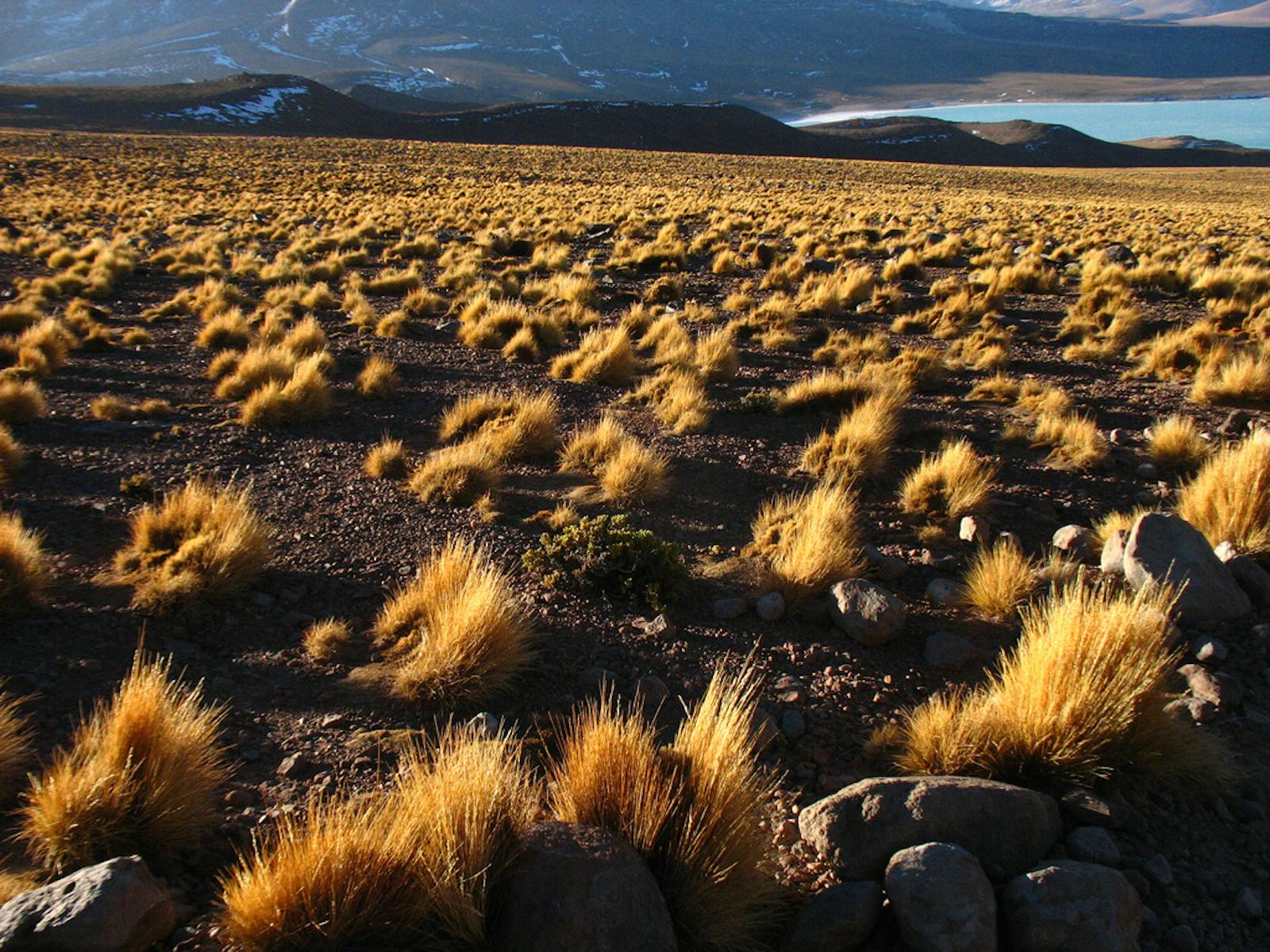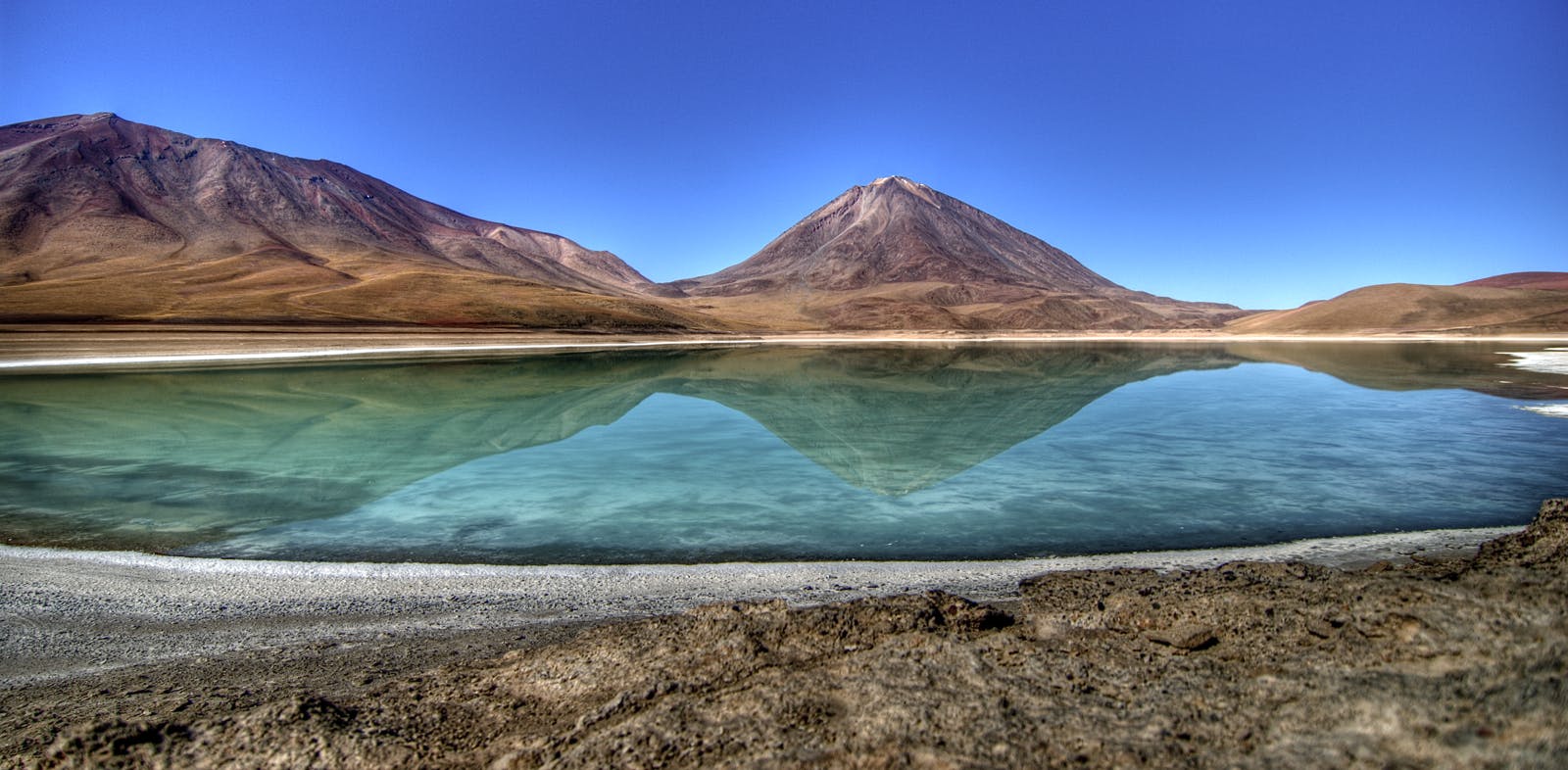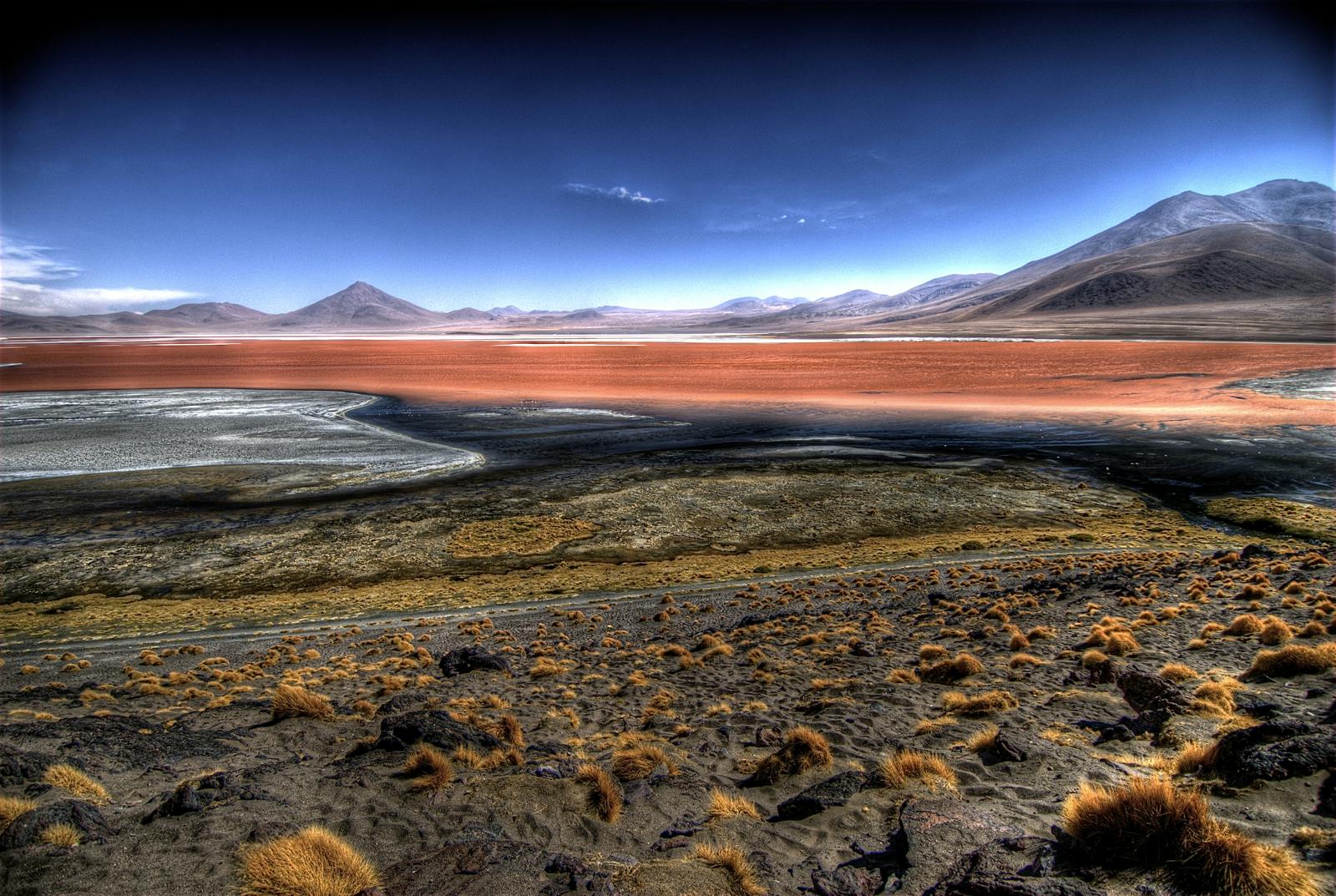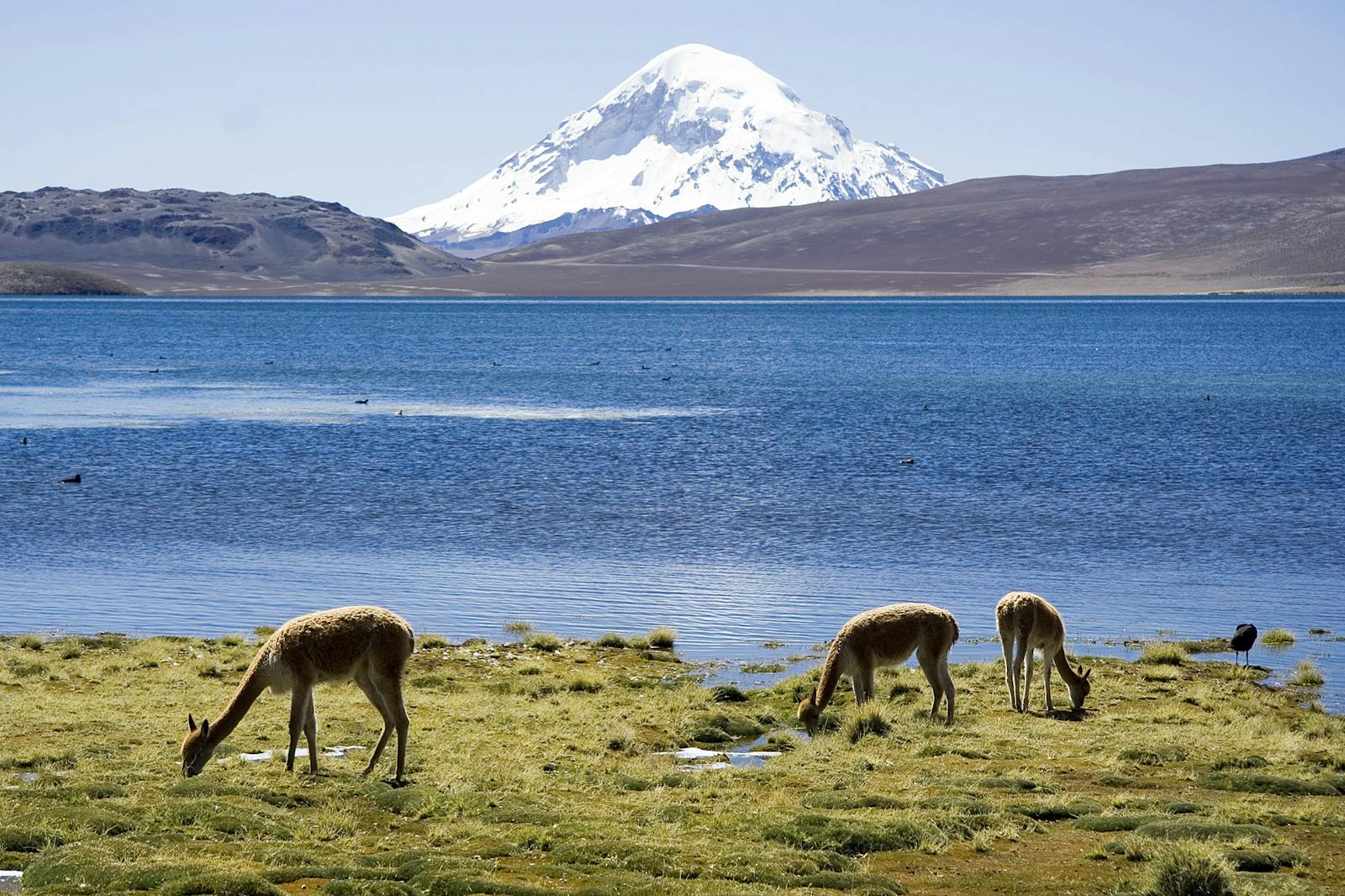Central Andean Dry Puna
The ecoregion’s land area is provided in units of 1,000 hectares. The conservation target is the Global Safety Net (GSN1) area for the given ecoregion. The protection level indicates the percentage of the GSN goal that is currently protected on a scale of 0-10. N/A means data is not available at this time.
Bioregion: Andean Mountain Grasslands (NT5)
Realm: Southern America
Ecoregion Size (1000 ha):
25,620
Ecoregion ID:
587
Conservation Target:
47%
Protection Level:
3
States: Bolivia, Chile, Argentina, Peru
The Andean cat is a small and endangered felid that thrives above the tree-line in the cold, high altitude grasslands and rocky outcrops of the Central Andean Dry Puna ecoregion. This cat species is known to be most active during the night time, but most sightings by locals have occurred during the day.
Impacted by prey reduction, habitat loss, and hunting, the Andean cat has faced challenges trying to fit in as human settlements and agriculture have spread. The conservation of the Andean cat depends on protecting the smaller animals in the region, especially its favorite prey the mountain vizcacha.
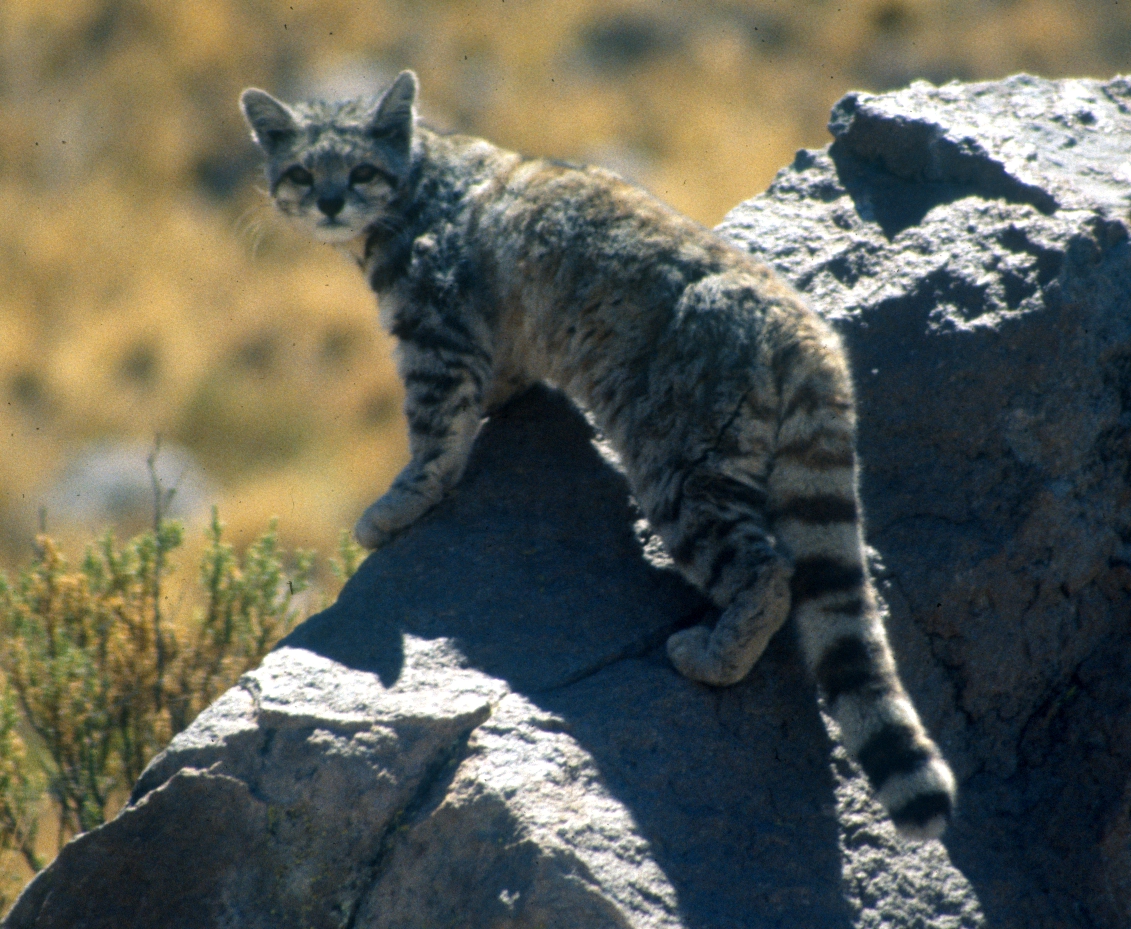
The flagship species of the Central Andean Dry Puna ecoregion is the Andean cat. Image credit: Creative Commons
The Central Andean Dry Puna ecoregion is nestled between the tree-line and the permanent snow-line in a very dry region of this mountain range. Formed over 50 million years ago, the Andes holds many volcanic mountains and the remnants of an ancient inland sea, upon which this ecoregion sits. Vegetation is predominantly a mix of montane grasslands paired with herbaceous communities. Dry puna is distinguished from other types of puna by its lack of rainfall, receiving less than 400 mm annually. Across the ecoregion annual precipitation varies from 51 to 406 mm.
This ecoregion is unique with flora and fauna highly adapted to the high elevation and extreme temperatures. From east to west the vegetation changes from dry adapted shrubs such as Adesmia and Senecio to grassy steppe with grasses of the genera Calamogrostis and Stipa. Above 4,000 m the vegetation consists of floating submerged plants called cushion bogs. It also has forests of Polylepis, the only tree-like genus that occurs naturally at high elevations.
A few mammals in the region include vicuña, mountain vizcacha, puma, Andean cat, Andean fox, and Andean hairy armadillo. Unique birds include three species of flamingos: Chilean, Andean, and Puna (or James’s).
Most of the endemic birds in the ecoregion are found in Polylepis and scrub forests along the lower elevation margins, including the endangered Cochabamba mountain-finch, and the threatened Maquis canastero, rufous-bellied saltator, chestnut canastero, wedge-tailed hillstar, and Tucuman mountain-finch. Endemic amphibians include the Telmatobius huayra; two recently discovered reptiles of the genera Liolaemus were recorded in the Eduardo Avaroa Reserve.
For centuries, the Andean Puna has been highly impacted by livestock grazing with the vegetation also affected by burning, firewood collection, and clearance for cultivation. The camelids, goats, and sheep in the area degrade the herbaceous vegetation, disrupting the life cycle for plants. The clearing of Polylepis and Azorella forest for agriculture, firewood collection, and burning for pasture is devastating these populations and is an increasing threat to the endemic fauna, especially birds. Additionally, mining activities in the Cordillera Occidental pollute the water bodies and poorly drained areas.
There are some protected areas within this ecoregion; most of them were created as wildlife reserves. Sajama National Park (IUCN category II) covers 1,002 km2 and is one of the most biodiverse Andean Parks in the ecoregion hosting 25 species of mammals.
The priority conservation actions in the next decade are to: 1) establish sustainable methods for livestock grazing to limit environmental impact; 2) work with the local community to reduce burning of forest; 3) mitigate water pollution from the mining industry.
Citations
1. Locklin, C. 2018. South America: Argentina, Bolivia, and Chile. https://www.worldwildlife.org/ecoregions/nt1001 Accessed October 4, 2018.
2. Villalba, L., Lucherini, M., Walker, S., Lagos, N., Cossios, D., Bennett, M. & Huaranca, J. 2016. Leopardus jacobita. The IUCN Red List of Threatened Species 2016: e.T15452A50657407. http://dx.doi.org/10.2305/IUCN.UK.2016-1.RLTS.T15452A50657407.en. Downloaded on 16 October 2018.
3. Stattersfield, A.J., M. J. Crosby, A. J. Long, and D. C. Wege, editors. 1998. Endemic Bird Areas of the World: Priorities for Biodiversity Conservation. BirdLife International, Cambridge, UK.
